More Images
Photographer Sandy Noto and writer/photographer Adam Gilson captured the atmospheric historic site on camera.
A writer visits the site of Jubilee College in Peoria, Illinois, and finds the spirit of Kenyon’s founder is still very much alive there.
Story by Adam Gilson | Photography by Sandy Noto & Adam Gilson
I’m driving west on U.S. Highway 150, leaving the westernmost reaches of Peoria, Illinois, behind me. The landscape quickly changes from suburban to rural, and the tiny village of Kickapoo comes and goes. I turn right onto Princeville-Jubilee Road, dipping into the valley of the Kickapoo Creek and rising back out. A weatherbeaten sign directs me to turn left: Jubilee College State Historic Site and Park.
A visitor would not know this sign sits on a piece of land that was once the public square for the village of Jubilee. The short stretch of road in front of me, lined with 20th-century ranch-style houses, was once a village that supported Jubilee College, the college that was going to be the lasting legacy of Bishop Philander Chase, the same man who founded Kenyon.
There is, of course, no institution today named Jubilee College. Jubilee lived a short life, pushed relentlessly by its founder and chief promoter. But the remnants of the college still stand on a quiet, 95-acre hillside, and many people in the local community are as determined to keep its history alive as Philander was to make his college thrive.

Anybody observing how Kenyon talks about its founder would be excused to think Philander Chase lived in Gambier until his dying day. We invoke his name at the annual Founders’ Day ceremony. Students start and finish their Kenyon careers by massing on the steps of Rosse Hall, singing a song that celebrates his founding of the College. And a bronze cap sunken into the pavement on Wiggin Street is stamped with his name, marking the location of the well he dug in the village.
But Philander did not leave Kenyon on the best terms. He stormed away from his college, just three years after he had relocated it from his home in Worthington to Gambier Hill. In 1831, unable to overcome his differences with the faculty and the board of trustees, he resigned his presidency as well as his position as the head of the Episcopal Diocese of Ohio. At the age of 55, he headed off into a likely retirement, eventually settling on a farm in Gilead, Michigan.
And there he might have remained, except that he was selected to lead the newly formed Episcopal Diocese of Illinois in 1835. His life once again uprooted, he traveled with his family to Illinois, aiming to re-create what he had done in Ohio just a decade before. His frontier diocese would need clergy, and he needed a source of income because he received no pay for being the head of the diocese. So, he set out to create a new college in the wilderness. He secured a spread of more than 3,000 rural acres on a remote hilltop, with views of the Kickapoo Creek valley that might have reminded him of his old Ohio home. He built a house he called Robin’s Nest, a mile away from the Jubilee site, and lived there while founding his new college. He headed to England, begging for funds from the same benefactors, including Lord Kenyon and Lady Rosse, who had funded Kenyon. And, in 1839, a limestone building, with arched windows pointed heavenward, began to rise on the Jubilee hilltop.

The sign in front of me contradicts itself. “Open for tours daily, 9-5,” claims a crackled, tavern-style sign hanging outside the entrance to the west wing of the Jubilee building. But tacked right above that promise is another sign, proclaiming, in capital letters, that the Jubilee College State Historic Site is CLOSED.
Today, the doors will open, but only through special arrangement. I’m meeting Patricia Melaik, a 77-year-old Peoria resident who will not hesitate to talk about Jubilee when asked. Melaik is a master gardener and lifelong learner who first heard about the site nearly a decade ago when reworking an abandoned butterfly garden on the grounds of the historic site. She immediately fell in love with the place and devoted herself to learning as much about Philander and his Illinois project as she could.
Melaik’s introduction to Jubilee came after the building was closed to the public. The state-owned building was a fully staffed museum offering daily tours in the 1980s and ’90s, but statewide budget cuts forced its closure in 2008. Only a caretaker remained on-site, tending to the adjoining grounds and opening the building for occasional volunteer-led events.
Wanting to see the building open to tours once again, Melaik organized volunteers and hosted an open house in 2015. Melaik was encouraged by the public response, as 425 visitors and 33 volunteers took advantage of the first opportunity in years to see the inside of the place. She continued hosting events in following years, albeit with lower attendance than her first, until the COVID-19 pandemic forced the events to pause.
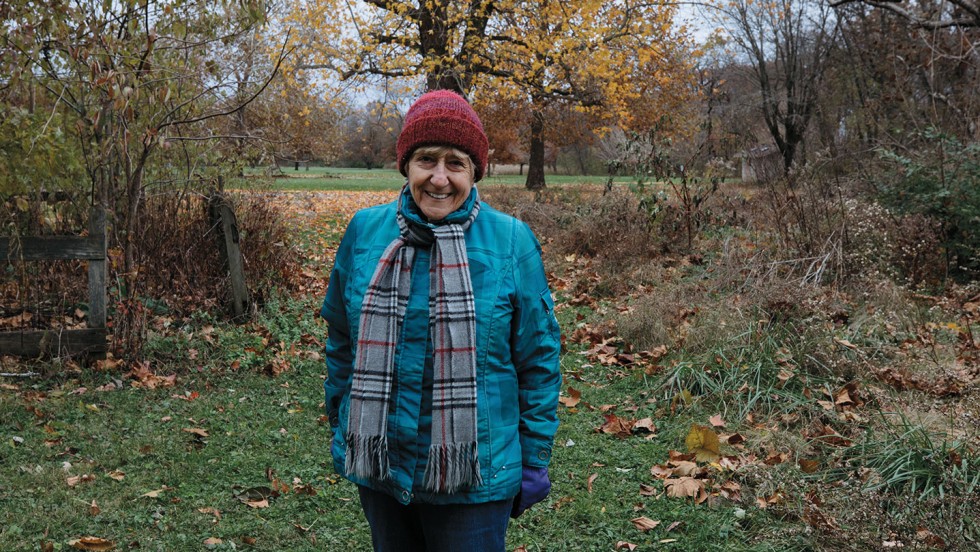
Today, Melaik has invited two of her fellow master gardeners and Jubilee enthusiasts, Louise Bassett and Bonnie Hunt, to lead a tour of the shuttered museum. We’re joined by Stu Whitaker, the site superintendent of adjoining Jubilee College State Park, and the man who holds the literal, but not figurative, keys to the building. While he can unlock the door whenever he wishes, he can only welcome visitors inside with permission from the Illinois Department of Natural Resources.
Melaik, Bassett and Hunt are wearing matching blue shirts, at Melaik’s insistence. The shirts were produced for Melaik’s 2015 open house and feature the slogan “a jewel in your backyard.” The slogan speaks to Melaik’s mission to spread her affection for this history-rich place throughout the community. “People didn’t know this was here,” she said. “Unless you live in this locality or have relatives in the cemetery, you’re not going to know it’s here because the state doesn’t do a big deal about it.”
As Melaik began to organize tours of the building, she revised and simplified the state-supplied tour script, handing it to Bassett and Hunt to recite. Bassett and Hunt are reprising their roles as tour guides today, but the first task is a technical one: to figure out how to turn on the television in the theater so that we can watch a historical video. After we’re greeted with a blast of static from the bulky 1990s-vintage television, one of the volunteers pushes a cassette into the VCR, and the presentation begins.
Produced by the state historical agency, the video provides a concise background of the college’s founding. The story begins with Philander’s arrival in Ohio, hinting at his obstinance. “There, he founded Kenyon College to educate priests for his frontier diocese, financing the school with funds collected on his first trip to England,” the narrator intones. “But complaints about Chase’s authoritarian style led to his departure from Ohio.”
Our small group moves into a room that tells the story of Jubilee through artifacts, interpretive panels, and many portraits and photographs of Philander. We then pass through a classroom with reproduction desks, entering the two-story chapel, with a balcony above. The most recent renovation restored the space to the simplicity of its early years, when Philander’s voice thundered from the pulpit to the assembled students.
Hunt directs our attention to an organ beside the pulpit. It’s not the college’s original, but, like the original, it was built by the prominent 19th-century pipe-organ maker Henry Erben. Hunt relates a tale that is clearly a favorite of the guides:
“Bishop Chase went to Henry Erben and said, ‘I need an organ. I want you to give it to me.’ And Erben said, ‘I’ll give it to you for half price.” But, said Hunt, Philander persisted. “He said, ‘I’m starting a theology school. I’m training people to be ministers. Those ministers are going to go out to churches, and they have to get organs from somebody.’ And Erben gave him the organ — and paid the freight on it,” she finishes with a laugh.
The anecdote, likely repeated to countless numbers of touring groups before the museum’s closure, helps bring Philander to life. He was a physically large man, about six feet, seven inches tall. He was persuasive and domineering. And he founded his frontier school and kept it going through sheer force of will.

When Philander set out to create his new college, he was determined to avoid repeating the mistakes he had made in Ohio. In his mind, his work at Kenyon was a failure. Philander had wanted to be more than the college president. Rather, he wanted to have total control of the affairs of the College. Kenyon, he wrote, should be “all united under one head, pursuing one common interest.”
Writing in the Kenyon College Alumni Bulletin in 1996 about the founding of Jubilee, Professor Emeritus of Physics Thomas B. Greenslade reflected on those perceived failings. “Clearly, Philander Chase was to be that father, that patriarch,” he wrote. “The faculty dissented from this view of their function. … With that, Chase resigned as bishop, thereby severing his connection with the institutions in Gambier for which he had labored so long.”
He would, instead, establish himself as the father figure at Jubilee. From the college’s founding, he held its land in his own name. No board of trustees would get in the way. He established a mill, farmed the land, put the students to work and set out to create a self-sufficient village. His plans were ambitious. A fanciful drawing of the college grounds on display in the museum imagines a busy campus anchored by an ornate, multi-story Gothic structure, with twin spires dwarfing the current humble building. Designed by the prominent architect Richard Upjohn, this grand hall was likely always a dream. Philander had no funds available to build it — and, with the Jubilee’s peak enrollment around 50, no reason to think Jubilee would ever attract enough students to fill it.
When Bishop Chase ultimately chartered Jubilee College in 1847, he included in the charter the unusual provision that his decisions would ultimately overrule those of the newly formed board of trustees. Under this charter, Philander was effectively president for life. But that life was cut short when, in 1852, he was thrown from a carriage on the grounds of Jubilee. He succumbed to his injuries five days later, at the age of 76. The college he had founded so late in life was just 12 years old.
After Philander’s death, “the guidance of the college … fell into feeble hands,” wrote the botanist Virginius Chase, one of Philander’s descendants. The Rev. Samuel Chase, a Jubilee professor and a cousin of Philander, assumed control of the school but lacked the founder’s fundraising abilities. As the country tumbled toward civil war, the college’s enrollment, never robust, dwindled. Samuel Chase went off to war and left the college in another’s hands.
“The little school … melted away,” Virginius Chase wrote. “Dr. Chase, upon his return, found only vacant seats and empty halls.”
Philander’s frontier college finally closed in 1868.

As the years passed, the L-shaped building overlooking the valley existed in an uncertain state. Attempts came and went to reuse the building for something resembling its original purpose — a school for Native American boys, a technical school, a chapel reopened for church services. None lasted.
By the 1920s, the Jubilee building and surrounding grounds were largely abandoned. Legally, they belonged to the board of trustees of Jubilee College, as that body had not officially dissolved. The state successfully moved in 1926 to void the charter; five years later, a court returned the lands to Philander’s heirs. Soon after, the college property was auctioned at the courthouse in Peoria.
A civic-minded Peoria psychiatrist named George Zeller, appalled at the condition of the property, placed the winning bid. “Anyone interested in the preservation of historic sites ... could only shudder at the thought that it might be converted into a dance hall, road house or chicken dinner resort, as one rumor had it,” he wrote in his memoir. Rather than see it become a roadhouse, Zeller donated the acreage to the Boy Scouts for use as a camp, but the land was back in his hands by 1935. This time, Zeller gave the land to the state of Illinois for the purpose of establishing a park.
Zeller’s efforts to save the historic site were noticed in Gambier by none other than William Foster Peirce, the 12th president of Kenyon. As an ordained Episcopal priest himself, Peirce was a champion of Philander’s legacy and had been known to mention Jubilee in his weekly lectures.
“It is a true satisfaction to learn that the lands of Jubilee College are to be rescued from ruin,” wrote Peirce in a letter to Zeller following the auction. “During the many years that I have been in Gambier I have cherished hopes and made tentative plans for visiting Jubilee but have never been able to accomplish it. Because of the respect and reverence in which we at Kenyon College hold the memory of Philander Chase, a journey to the environment in which his last years were spent seems very alluring.”
That wish to visit Jubilee soon came true. On May 21, 1935, Peirce was one of four featured speakers offering remarks commemorating the 100th anniversary of Philander’s founding of the Episcopal church in Illinois. Before a crowd of more than 500 gathered beside Philander’s grave in the Jubilee Churchyard Cemetery, Peirce recited the lyrics to “Philander Chase” and celebrated the bishop’s legacy.
In the history of higher education in America, I know of no more dramatic nor moving narrative than the record of Philander Chase’s heroic efforts for Kenyon College. … When tragedy overtook our centennial hero and he left Ohio and his beloved Kenyon College, the indomitable will and unflinching fortitude of Philander Chase found glorious expression in the founding of Jubilee College. … We stand today by the grave of a great and noble teacher. Here he rests in serenity and peace, and the aging walls of Jubilee form a fitting monument. But at Kenyon College he lives — as a real and active influence in the life of every student who walks through Chase Avenue, looks up at the noble Philander Chase Tower, and enters the doors of Old Kenyon which, in its fortress-like strength, is, perhaps, his truest monument.

Melaik and I are standing beside Philander Chase’s grave, just a couple hundred yards from the old college building. The Jubilee Churchyard Cemetery remains an active burial ground; fresh soil nearby indicates a recent interment. With the crowds of nearly a century before long gone, it’s a quiet spot, its solitude interrupted only by an occasional breeze, crickets and a low, distant hum of farm equipment working the surrounding fields. Osage oranges litter the ground at the perimeter, dropped from the dense thicket of trees separating the cemetery from the surrounding state park.
Philander’s monument is a prominent chunk of stone, shaped into a pulpit, with an open Bible carved on the top. A brief biography is etched into each side, in recessed areas shaped as Gothic arches that match the windows in the college building and in Old Kenyon. His burial plot is the only one in the cemetery surrounded by a fence, but the black iron fence no longer stands straight. It’s missing a section, and many of its ornate finials are broken away, lost to time. A massive fir tree at the corner of the plot lifts the soil over the base of a portion of the fence; a split runs the whole way down its trunk, perhaps from a lightning strike. The trunk is bound together with an old rope.
Beside Philander’s grave is a much newer stone commemorating the bishop’s wife, Sophia Chase. This stone, placed in 2008 by the nonprofit Citizens to Preserve Jubilee College, marks the formerly unmarked grave. Several members of the extended Chase family, including Samuel and Virginius, rest nearby.
As I examine the Chase enclosure, Melaik motions for me to join her at another, more recent grave, just steps away. This stone commemorates six members of the Tucker family, including Georganna Tucker, 1898-1987. The proximity of these two eternal resting places is appropriate — while Philander’s monument immortalizes the founder of this place, Tucker’s commemorates the person who is perhaps the single biggest reason the Jubilee building continues to stand today.
“Georganna was the ringleader,” Melaik says.

In the decades after the state of Illinois took ownership of the site, the aging walls of Jubilee continued to decline. While some restoration work was performed on the building’s chapel, promises of full-scale renovations came and went. Newspaper headlines suggested hopes for a full restoration, but funding fell through.
Beth Haney, a Peoria native who now lives just a few miles from the site, first saw the building as a child in the 1950s during a family trip to the grounds. “I remember my dad picking me up and putting me on his shoulders so I could see in the windows,” Haney said. “At that time, in Jubilee College, there were bales of hay and sheep. The building was broken down to a great degree, but it still had charm.”
By the 1960s, the end seemed to be near for the building. An October 1968 article in the Peoria Star proclaimed the building “too dangerous to explore.” A photo showed a portion of the west wing’s stone wall collapsed on the ground and the remainder tentatively braced by heavy wooden timbers. A park ranger was quoted: “If something isn’t done soon, the building will be beyond repair.” State officials recommended removing the building altogether.
And then the ringleader, Georganna Tucker, got involved.
A retired social worker, Tucker lived a few miles away from the site on an old family farm. Her ties to Jubilee ran deep: the family had purchased the farm from Philander’s son, Henry, and her great-uncle had been the village postmaster and once worked in the college store. Determined to preserve Jubilee’s heritage, Tucker hosted nine people on her front porch in June 1971, inaugurating the Citizens to Preserve Jubilee College. The group pushed on many fronts: They gathered artifacts to tell the story of Jubilee; they raised funds; they lobbied government officials.
Haney got to know Tucker around this time, and the two became fast friends despite a great age difference. “She was a very determined person. That’s why Jubilee is here today,” Haney said.
The citizens group fought for the restoration of the building, hosting events to draw in the public and create interest in the project. Their annual Olde English Faire drew thousands. They commissioned a play, “Oh, Philander,” from the playwright Kermit Hunter, staging a production outside the building’s west wing. A full restoration commenced. Finally, in 1986, the building opened to the public, with a museum filled with artifacts gathered over the years through the efforts of the citizens group.

The Jubilee College State Historic Site hummed with activity for two decades, hosting tourists, history enthusiasts and groups of public school students. Volunteers from the citizens group worked with park staff to host special events before the closure.
The place is much quieter today — no crowds, but visitors to the grounds are frequent. Nearby residents walk their dogs around the park’s loop road. A jogger goes one way; a motorcycle (the loudest thing I’ve heard in a while) slowly putters the other. A ham radio enthusiast sets up a portable aerial beside his pickup, using the site’s elevation to his advantage. And in a large and empty picnic pavilion, Melaik introduces me to two more longtime volunteers.
Sue Swanson, part of the group that met on Tucker’s porch all those years ago, is one of the few remaining members of the Citizens to Preserve Jubilee College. “I’m the youngest one, and I’m 76,” she tells me. In 2011, she published “In Shades of Sepia,” a modern retelling of Jubilee’s history. After viewing original documents and collecting stories for so many years, Swanson says, she decided to share what she knew. “I thought, I’m getting really old, and when you get old, you get forgetful. And, I thought, ‘If you don’t get this written down, you’re gonna lose it.’”
Swanson and another volunteer, Joan Welton, banter back and forth, sharing memories of the years when the historic site was fully open and attracted more visitors. Welton, now 80, first came to Jubilee to design a historical costume for an event, and she stayed for 12 years as a docent, greeting visitors. She recalls meeting some Kenyon students who visited the museum, although she is not sure of the year. “There were some kids from there who came here one time,” she says, “and we made them sing the song.” She is, of course, referring to “Philander Chase.” And, Welton notes, the students did, in fact, sing the song.
We get a laugh out of this anecdote, but the story demonstrates the deep, and somewhat unusual, sense of connection Kenyon people have felt over the years with Jubilee. That connection is perhaps fully displayed by President Peirce’s remarks nearly a century ago, but it has persisted into recent times. In a 1993 letter to Kenyon, Louis Whitaker ’50 wrote of a visit to Jubilee during a January snowstorm, enclosing photos of the site with the typewritten caption, “if that isn’t a near reproduction of Gambier, I don’t know what is.” And in a lengthy correspondence from 2015, Thomas Bruggman ’75 recounted a tale of driving overnight after his graduation to visit Philander’s grave. In 2014, he re-created the trip with his wife and nine-year-old son, camping in the park for the night in his RV.
“Revisiting Jubilee College, Philander, and his wife, we awoke to a windswept, sunlit morning,” wrote Bruggman. “The dew sparkled across the grassy green meadow, reflecting the sun’s glow and the call of distant sheep in the wind. The hilltop chapel and stone buildings seemed to bring a human spirit to nature’s harmony. I could feel that both Kenyon and Jubilee colleges were one in heart and spirit.”
Those same feelings of deep personal connection have moved generations of volunteers to preserve Jubilee and protect its legacy. After the building was saved from demolition, the success of the restoration effort prompted the citizens group to consider disbanding. Lisa Sandall, a local resident, heard of those plans and began her own involvement with the group, hoping to keep it intact.
“They felt they didn’t have any reason to still be a group since they weren’t really doing any projects, and the members were all older,” wrote Sandall. “I was very opposed to ending the group that had saved the college from ruin. I convinced them not to disband.” Sandall worked to organize additional events, but the group once again felt itself without a purpose after the 2008 closure of the building and museum.
With the future of the group — and of the building and museum — once again in limbo, Melaik’s introduction to the place kicked off a new round of efforts to attract visitors. Just like others who have stepped up over the years to reinvigorate the historic site, Melaik is motivated by an almost spiritual connection to the hilltop and the legacy of its founder. “There’s something about this place,” she says. “I feel a spirit. I feel his spirit. I feel somebody’s spirit when I come here.”
When Melaik began organizing events, the longtime volunteers were happy to follow her lead. Although delayed by the pandemic and facing other headwinds — thin funds, bureaucracy, the challenge of enlisting volunteers — Melaik wants to keep pushing to share Philander’s legacy with new generations.
“She’s the driving force,” Swanson says of Melaik. “I don’t have the energy to spearhead anything anymore. We’re followers now.”
“All the people that I’ve asked have stepped up to help. Nobody has refused, and I think that’s wonderful,” Melaik responds. “I’m determined and persistent, and I will do this as long as I can.”

After I bid farewell to Melaik and her fellow volunteers, I think about this venerable old place and the many generations of hopes and dreams, and setbacks, it represents. As the building approaches its own bicentennial — with its future, as always, questionable — it stands, tired but sound, a monument to a man whose name still adorns the landscape.
I look around one last time before driving off through the main gate of the park and the onetime village of Jubilee. I turn south, into and out of the Kickapoo Creek valley, and past Robin’s Nest, Philander’s frontier home.
At U.S. Highway 150, I see a rutted, gravel wayside. Mounted there on a post is a blue and gold historical marker, erected in 1935:
Jubilee College, two miles to the north, was established by Philander Chase, first Protestant Episcopal bishop of Illinois, as one of the state’s early institutions of higher learning. First students were received in 1840, and the school continued to operate until 1868. Jubilee College is now a state park.
A rich history, summed up in 49 words. I turn left on 150, heading east, bound for Kenyon, perhaps Philander’s truest monument.
Photographer Sandy Noto and writer/photographer Adam Gilson captured the atmospheric historic site on camera.
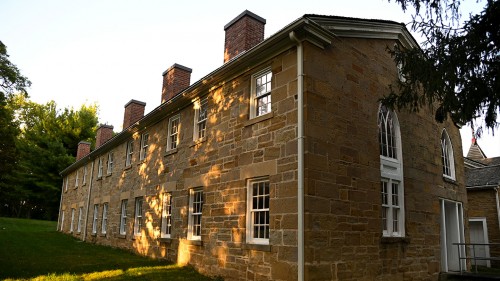
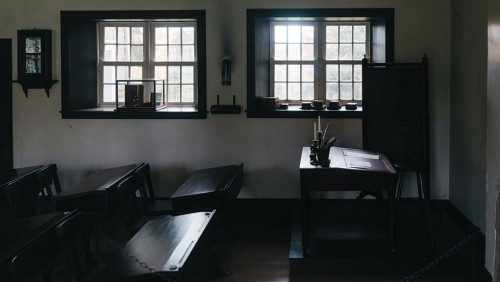
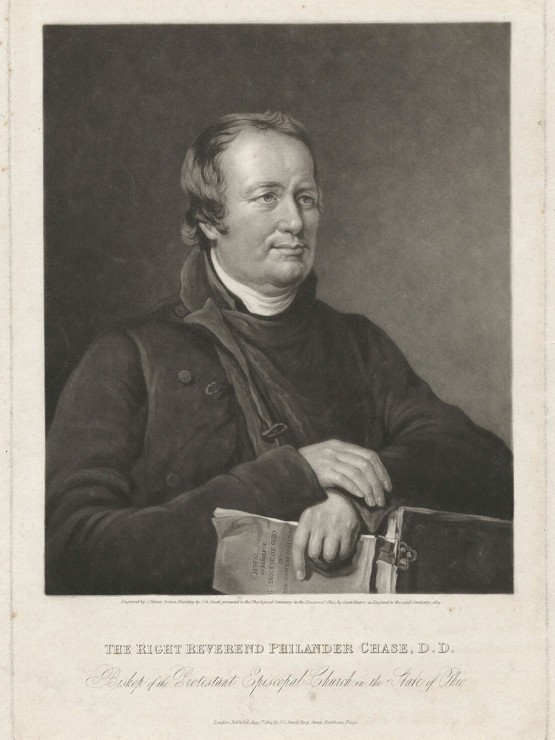
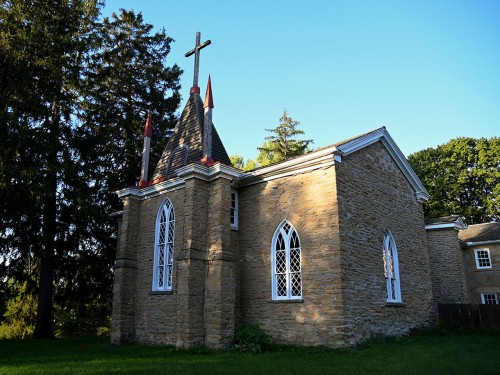
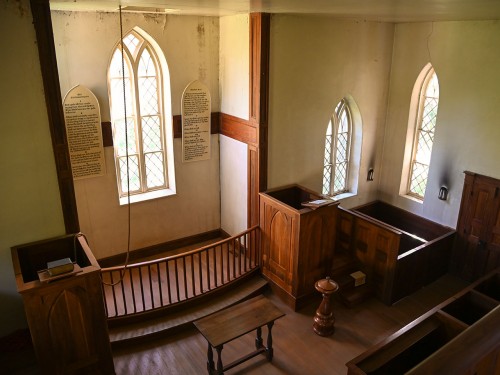
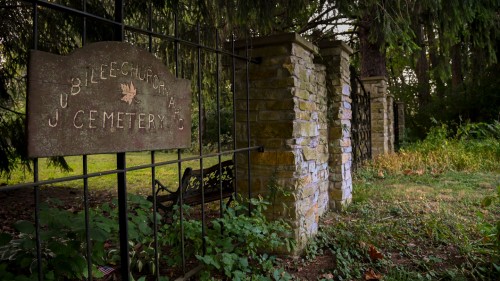
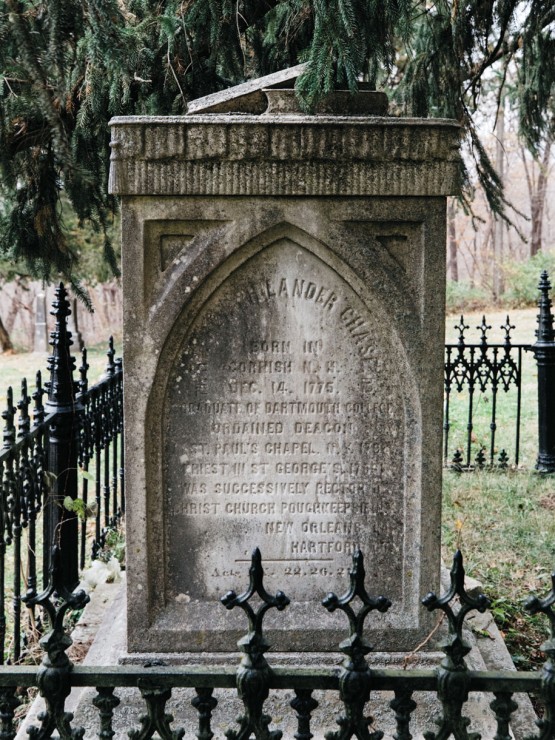
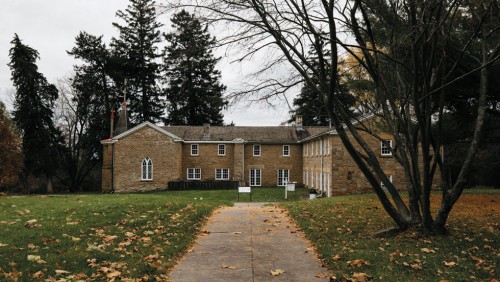
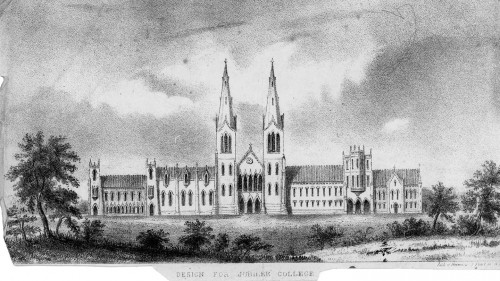
What it takes to create a classroom where everyone can thrive.
Read The StoryHow a marketer and trail-runner broke into an untapped market, scaled up and started over.
Read The Story